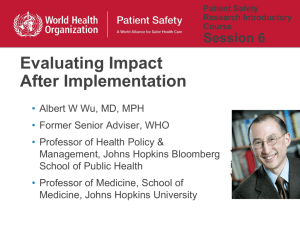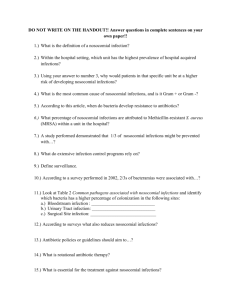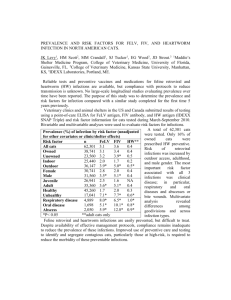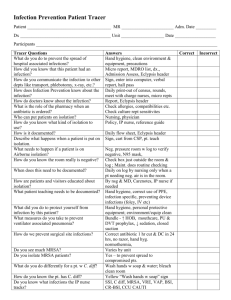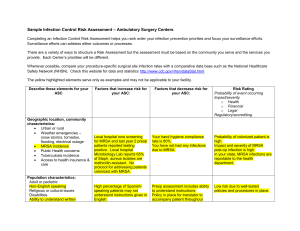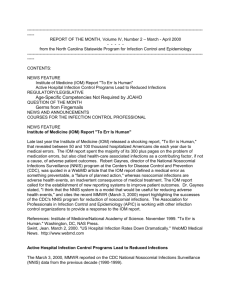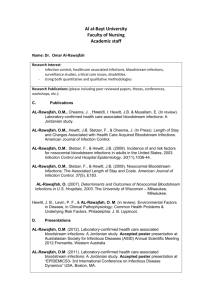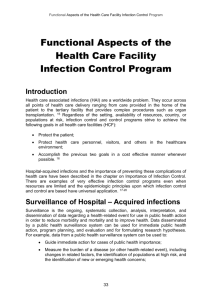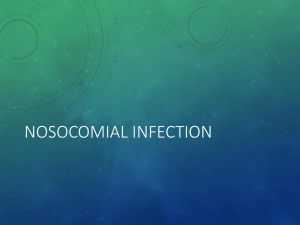pubdoc_12_8400_155
advertisement
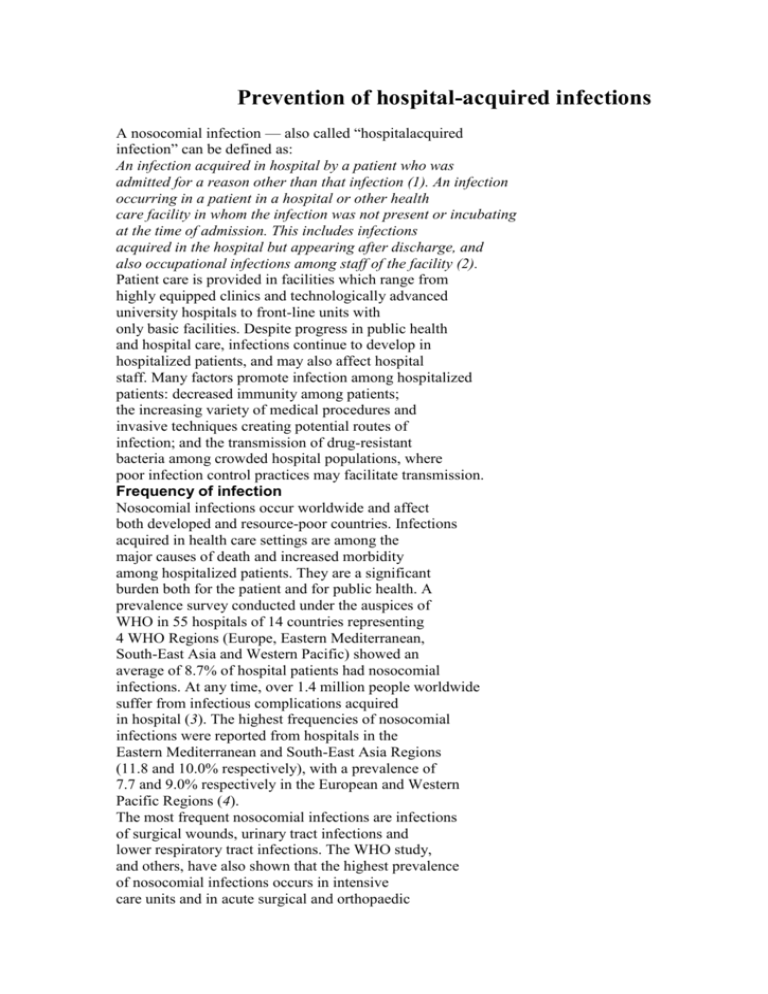
Prevention of hospital-acquired infections A nosocomial infection — also called “hospitalacquired infection” can be defined as: An infection acquired in hospital by a patient who was admitted for a reason other than that infection (1). An infection occurring in a patient in a hospital or other health care facility in whom the infection was not present or incubating at the time of admission. This includes infections acquired in the hospital but appearing after discharge, and also occupational infections among staff of the facility (2). Patient care is provided in facilities which range from highly equipped clinics and technologically advanced university hospitals to front-line units with only basic facilities. Despite progress in public health and hospital care, infections continue to develop in hospitalized patients, and may also affect hospital staff. Many factors promote infection among hospitalized patients: decreased immunity among patients; the increasing variety of medical procedures and invasive techniques creating potential routes of infection; and the transmission of drug-resistant bacteria among crowded hospital populations, where poor infection control practices may facilitate transmission. Frequency of infection Nosocomial infections occur worldwide and affect both developed and resource-poor countries. Infections acquired in health care settings are among the major causes of death and increased morbidity among hospitalized patients. They are a significant burden both for the patient and for public health. A prevalence survey conducted under the auspices of WHO in 55 hospitals of 14 countries representing 4 WHO Regions (Europe, Eastern Mediterranean, South-East Asia and Western Pacific) showed an average of 8.7% of hospital patients had nosocomial infections. At any time, over 1.4 million people worldwide suffer from infectious complications acquired in hospital (3). The highest frequencies of nosocomial infections were reported from hospitals in the Eastern Mediterranean and South-East Asia Regions (11.8 and 10.0% respectively), with a prevalence of 7.7 and 9.0% respectively in the European and Western Pacific Regions (4). The most frequent nosocomial infections are infections of surgical wounds, urinary tract infections and lower respiratory tract infections. The WHO study, and others, have also shown that the highest prevalence of nosocomial infections occurs in intensive care units and in acute surgical and orthopaedic wards. Infection rates are higher among patients with increased susceptibility because of old age, underlying disease, or chemotherapy. Impact of nosocomial infections Hospital-acquired infections add to functional disability and emotional stress of the patient and may, in some cases, lead to disabling conditions that reduce the quality of life. Nosocomial infections are also one of the leading causes of death (5). The economic costs are considerable (6,7). The increased length of stay for infected patients is the greatest contributor to cost (8,9,10). One study (11) showed that the overall increase in the duration of hospitalization for patients with surgical wound infections was 8.2 days, ranging from 3 days for gynaecology to 9.9 for general surgery and 19.8 for orthopaedic surgery. Prolonged stay not only increases direct costs to patients or payers but also indirect costs due to lost work. The increased use of drugs, the need for isolation, and the use of additional laboratory and other diagnostic studies also contribute to costs. Hospital-acquired infections add to the imbalance between resource allocation for primary and secondary health care by diverting scarce funds to the management of potentially preventable conditions. The advancing age of patients admitted to health care settings, the greater prevalence of chronic diseases among admitted patients, and the increased use of diagnostic and therapeutic procedures.


